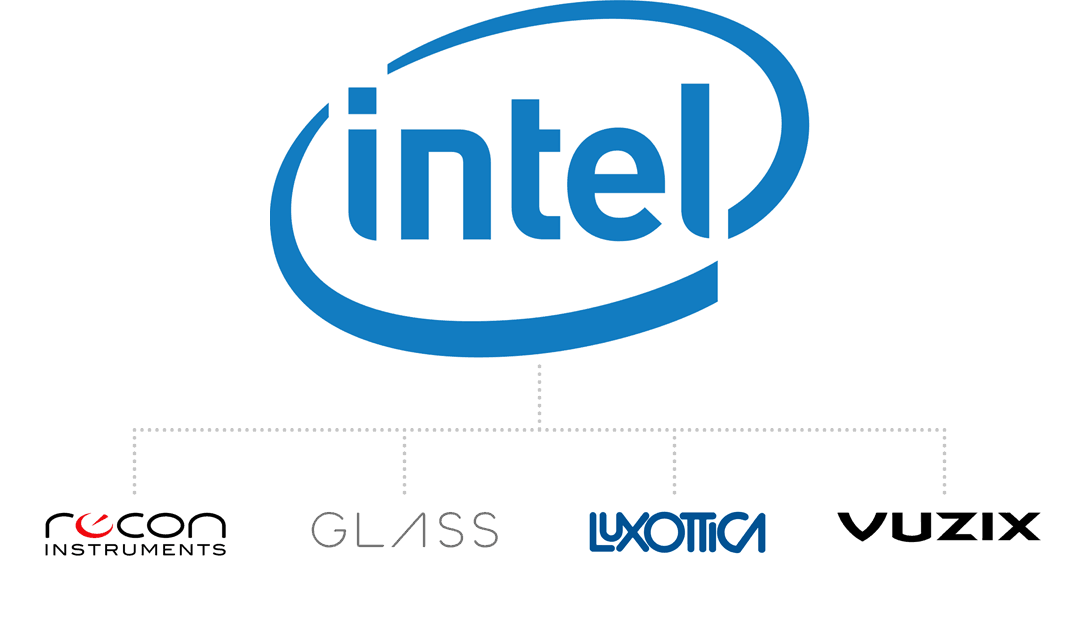
ARM architecture-based processors by Qualcomm, NVIDIA, Broadcom and others, power nearly all smartphones and tablets — especially Qualcomm. After losing out on mobile, Intel is intent not to be sidelined in the emerging wearables space. Over the last 30+ days, Intel has deftly positioned itself to dominate the smartglass market.
On December 1st, the Wall Street Journal reported that Intel has cut a deal to replace the Texas Instruments produced ARM-based processor currently used in Google Glass with an Intel chip, in the upcoming second generation Glass device.
Within two days, Intel then announced it had struck its own partnership with Luxottica to collaboratively produce smartglasses built on Intel processors (Luxottica owns Ray Ban, Persol and Oakley, while producing eyewear under license for Ralph Lauren, Chanel, Prada, Giorgio Armani and others; as parent company of both Lens Crafters and Sunglass Hut, is also the world’s largest eyewear retailer).
Prior to last month’s stunning events, Intel could only boast a stake in Recon Instruments as their key position in smartglasses (Recon is a Canada-based maker of sports-focused smart eyewear including the Snow2 line for ski goggles, and the Jet line of smartglasses focused on cycling).
Then, over the first weekend of the new year, it was announced that Intel has just made a $25M investment in Vuzix, the Rochester, New York-based maker of smartglasses. Earlier this year, Vuzix also announced a partnership with Lenovo to supply their M100 smartglasses to the Chinese market.
As if out of nowhere (in multiple deals that have surely been in the works for many months or longer), Intel has pulled a substantial majority of the smartglass market under their umbrella.
The ARM architecture still dominates wrist-worn devices: FitBit, Samsung Gear S, Motorola Moto 360, Pebble and even the Apple Watch; but it can no longer be assumed that ARM & Qualcomm will dominate the wearables space.
As recently as a mere month ago one could be forgiven for being skeptical of Intel’s odds, given that wearables are at this stage predominantly peripherals to users’ smartphones.
While many players jockey within the emerging wearables space, it could very well be the processor ingredient brands within them that define the true wearables battle of 2015.
DISCLOSURE: While working for the advertising agency, MVBMS EURO, I produced award winning advertising campaigns for Intel. Three years ago I led a pitch for a consumer-facing ingredient branding strategy to ARM (not awarded). As a co-organizer of Augmented Reality Event in Santa Clara, CA, our title sponsor was Qualcomm. I’ve also worked with Vuzix on event organization in the smartglass space. I have no investments in any company in this article, and nothing on this page should be taken as “investment advice.”
